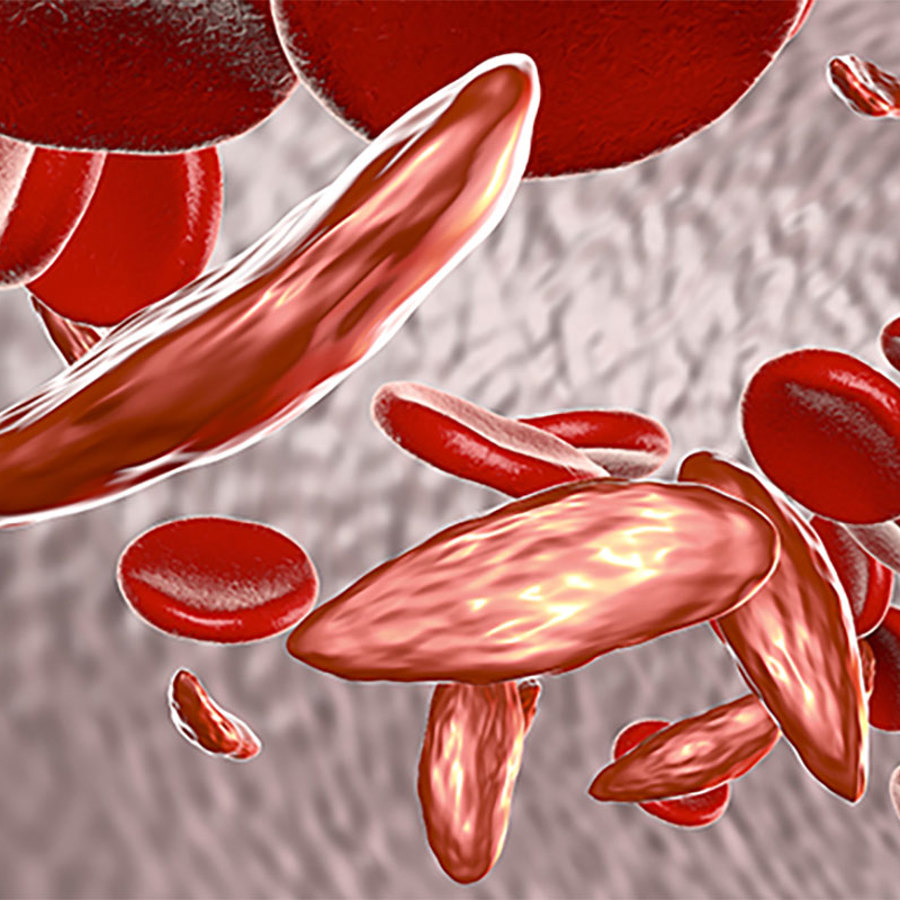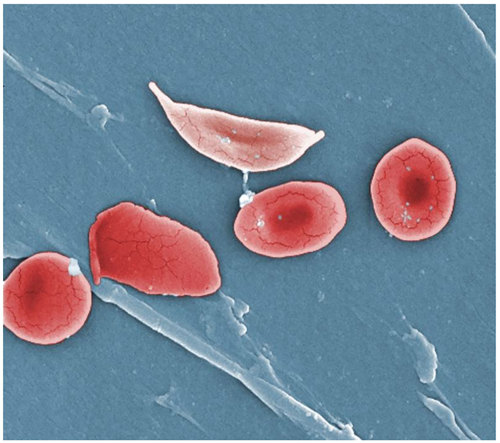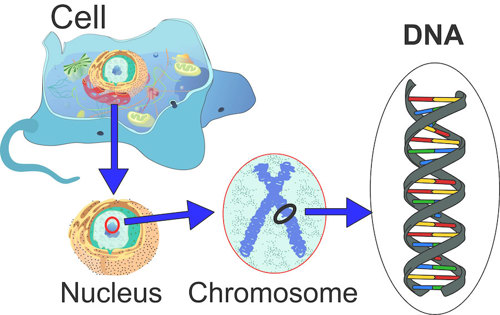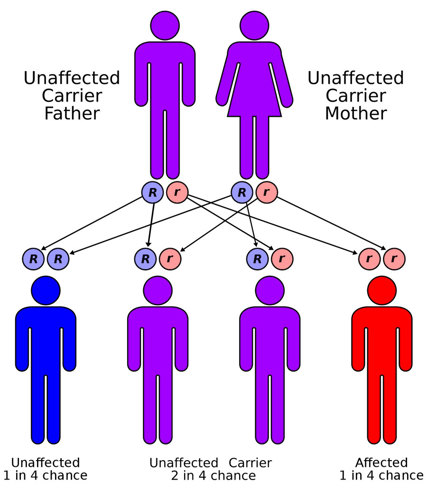
If both parents have sickle cell trait, how likely is their child to have sickle cell anemia?
November 5, 2015

- Related Topics:
- Genetic conditions,
- Autosomal recessive inheritance
A high school teacher from Texas asks:
Each of their kids should have around a 1 in 4 chance for getting sickle cell anemia. They will also each have around 1 in 2 chance for having sickle cell trait and a 1 in 4 chance for not having either.
Now keep in mind this does not mean that if they have four kids, one will for sure have sickle cell anemia. It might be that none or all of them do. The odds apply to each child.
The way this works is each parent with sickle cell trait has a 1 in 2 chance of passing it down. The 1 in 4 comes from the fact that both parents need to pass sickle cell down to you for you to get the full-blown disease.
So if both parents have it, then the odds of both passing it to you is 1 in 4. Basically you multiply the two chances together to figure out how often both things will happen. (1/2)(1/2) =1/4.
What I thought I’d do for the rest of the answer is dig into where those numbers come from. As you’ll see, it has to do with the fact that people with sickle cell trait are carriers for sickle cell anemia.
Sickle Cell Trait vs. Sickle Cell Anemia
People with sickle cell anemia have red blood cells that take on a crescent shape when they exercise. This shape cannot get through the tiny capillaries in our body, clogging them up. This causes the symptoms of sickle cell anemia.

Sickle cell trait is a much less severe form of the disease. In this case, it takes really strenuous exercise to cause the sickling. This is why athletes need to be tested for this trait.
The reason the red blood cells do this is because their hemoglobin isn’t working quite right. Hemoglobin carries oxygen to your cells and carbon dioxide away.
In people with sickle cell trait, some of their hemoglobin has a glitch that causes red blood cells to take on their unusual shape. In people with full-blown sickle cell, all of the hemoglobin has this glitch.
Your Genes Have The Instructions for You
So where did the glitch come from? Well, the instructions for making hemoglobin are found in something called DNA. Your DNA has the complete instructions for building, maintaining and running your entire body.
These instructions are found in stretches of DNA called genes. Each gene has the instructions for one small part of you.
So there is a gene that lets you digest the sugar in milk. There is another that helps determine your eye color. And still another that has the instructions for hemoglobin. And so on.

Sometimes the instructions have mistakes in them. We call those mistakes mutations.
Many times the mistakes are harmless, but sometimes they can cause problems. People with sickle cell anemia have a mutation in their hemoglobin gene that makes hemoglobin sickle.
Your genes come from your parents
So in people with sickle cell disease and sickle cell trait we find copies of hemoglobin that can cause sickling. But people with full-blown sickle cell disease have only sickling copies, while people with sickle cell trait have both donut and sickle copies. Where does that difference come from?
Turns out we have two copies of most of our genes. We get one copy from mom and one copy from dad.
That means mom passes on half of her gene copies to her child and dad passes on half of his. These two halves come together to make a full person. Which copy of each gene each parent passes down is chosen at random.
People with sickle cell trait got one working copy from one parent and one sickling copy from the other parent. People with sickle cell anemia got a sickling copy from both of their parents.
This points to why in your case each child has a 1 in 4 chance for ending up with sickle cell anemia. This is the chance that each parent will pass down his/her sickling copy.
The 1 in 4 Chance
In this case, both parents have sickle cell trait. That means they have one working and one sickle cell copy of the hemoglobin gene.
Now when they have kids, each parent will pass just one of their two copies down. This copy is chosen at random which means there are the following four possibilities:

In the first both mom and dad pass a working copy down to the child (blue stick figure). This child won’t have sickle cell trait or sickle cell anemia.
This also means that none of his or her children will have it either. Since the child doesn’t have the sickling gene to pass on, none of the next generation can get it. This child doesn’t have it to pass on.
In the next two possibilities, one parent passes a working copy and one passes a sickling copy (purple stick figures). In other words, mom passes a working copy and dad passes a sickling copy or vice versa. In this case the child will most likely have sickle cell trait.
And finally we get to the last possibility. In this case both mom and dad pass their sickling version of the hemoglobin gene down to the child (red stick figure). Since the child now has two copies of the sickling version, s/he will end up with sickle cell anemia.
So that is where the 1 in 4 comes from. There is a 1 in 4 chance that both parents will pass on the sickle cell version at the same time.

 Skip Navigation
Skip Navigation
